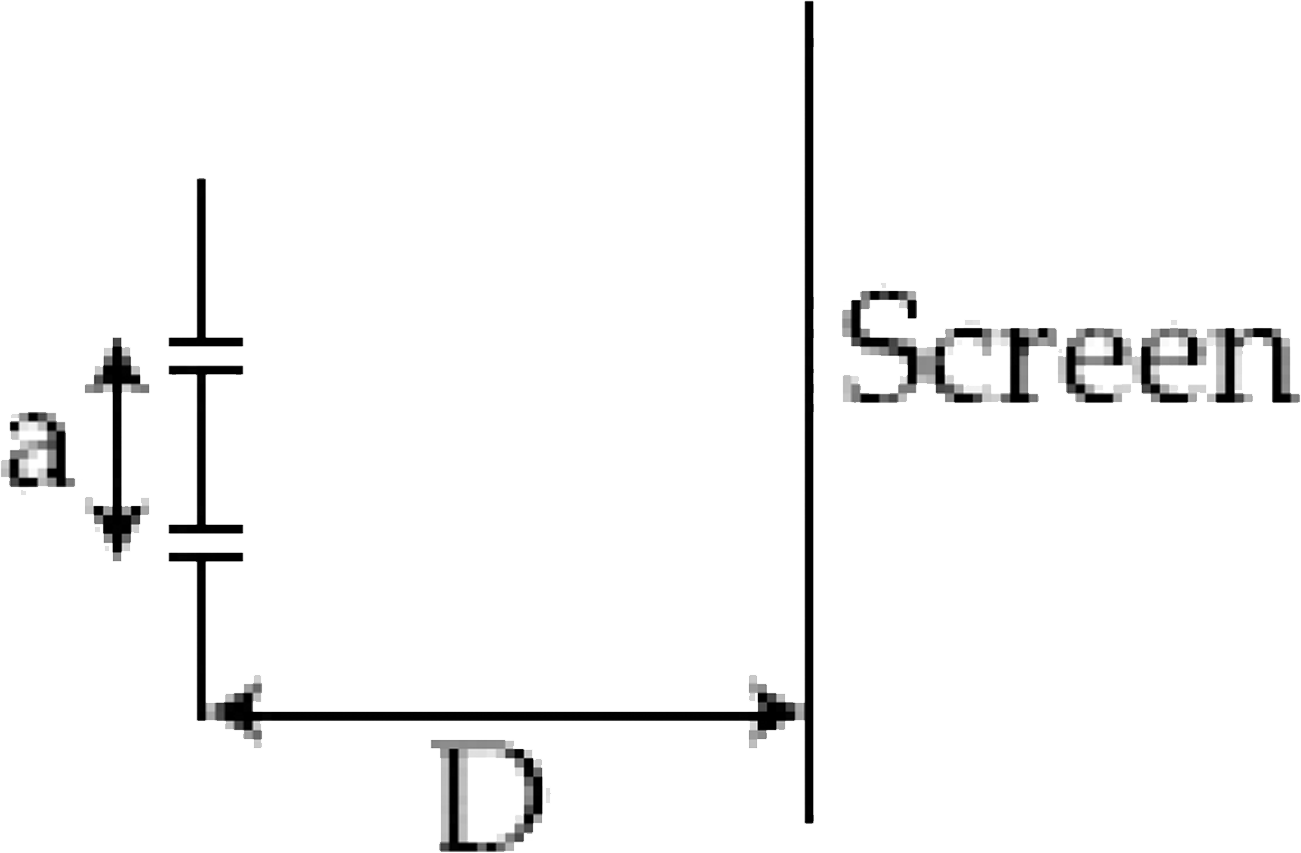Monochromatic light of wavelenghth 600 nm is used in a Young's double sllt experiment. One of the slits is covered by a transparent sheet of thickness 1.8×10−5 m made of a material of refractive index 1.6. How many fringe will shift due to the introduction of the sheet?
To solve the problem, we need to determine how many fringes will shift due to the introduction of a transparent sheet in a Young's double slit experiment. Here's a step-by-step solution:
Step 1: Identify Given Values
- Wavelength of light, λ=600nm=600×10−9m
- Thickness of the transparent sheet, t=1.8×10−5m
- Refractive index of the material, μ=1.6
Step 2: Calculate the Effective Path Difference
The path difference introduced by the transparent sheet can be calculated using the formula:
Δx=(μ−1)⋅t
Substituting the values:
Δx=(1.6−1)⋅(1.8×10−5)=0.6⋅(1.8×10−5)
Calculating this gives:
Δx=1.08×10−5m
Step 3: Relate Path Difference to Fringe Shift
The number of fringes shifted, n, can be found using the relationship:
nλ=Δx
Substituting the values we have:
n⋅(600×10−9)=1.08×10−5
Step 4: Solve for n
Rearranging the equation gives:
n=1.08×10−5600×10−9
Calculating this:
n=1.08600×104=0.0018×104=18
Conclusion
Thus, the number of fringes that will shift due to the introduction of the sheet is:
18
---
- Wavelength of light, λ=600nm=600×10−9m
- Thickness of the transparent sheet, t=1.8×10−5m
- Refractive index of the material, μ=1.6
The path difference introduced by the transparent sheet can be calculated using the formula:
Δx=(μ−1)⋅t
Substituting the values:
Δx=(1.6−1)⋅(1.8×10−5)=0.6⋅(1.8×10−5)
Calculating this gives:
Δx=1.08×10−5m
The number of fringes shifted, n, can be found using the relationship:
nλ=Δx
Substituting the values we have:
n⋅(600×10−9)=1.08×10−5
Rearranging the equation gives:
n=1.08×10−5600×10−9
Calculating this:
n=1.08600×104=0.0018×104=18
Thus, the number of fringes that will shift due to the introduction of the sheet is:
18
Topper's Solved these Questions
- LIGHT WAVESBOOK - HC VERMA ENGLISHCHAPTER - LIGHT WAVESEXERCISE - Objective -1
17 Videos
- LIGHT WAVESBOOK - HC VERMA ENGLISHCHAPTER - LIGHT WAVESEXERCISE - Objective -2
10 Videos
- LIGHT WAVESBOOK - HC VERMA ENGLISHCHAPTER - LIGHT WAVESEXERCISE - Question for short Answer
11 Videos
- GEOMETRICAL OPTICSBOOK - HC VERMA ENGLISHCHAPTER - GEOMETRICAL OPTICSEXERCISE - Question For short Answer
18 Videos
- MAGNETIC FIELDBOOK - HC VERMA ENGLISHCHAPTER - MAGNETIC FIELDEXERCISE - objective2
9 Videos
Similar Questions
Monichromatic lightof wavelenght 600 nm is used ina Young's double slilt experient. One of the slits is covered by a transparent sheet of thicknes 1.8×10−5 m made of a material of refractive index 1.6. How many fringe will shift due to the introduction of the sheet?
View SolutionA monochromatic beam of bright of light of wavelength 5000Å is used in Young's double slit experiment. If one of the slits is covered by a transparent sheet of thikness 1.4×10−5m, having refractive index of its medium 1.25. Then the number of fringes shifted is
View SolutionIn a Young's experiment, one of the slits is covered with a transparent sheet of thickness 3.6×10−3cm due to which position of central fringe shifts to a position originally occupied by 30th fringe. If λ=6000Å, then find the refractive index of the sheet.
View SolutionIn a Young's experiment, one of the slits is covered with a transparent sheet of thickness 3.6×10−3cm due to which position of central fringe shifts to a position originally occupied by 30th fringe. If λ=6000Å, then find the refractive index of the sheet.
View SolutionA double slit experiment is performed with light of wavelength 500nm. A thin film of thickness 2μm and refractive index 1.5 is introduced in the path of the upper beam. The location of the central maximum will
View SolutionThe figure shows a Young's double slit experimental setup. It is observed that when a thin transparent sheet of thickness t and refractive index μ is put front of one of the slits, the central maximum gets shifted by a distance equal to n fringe widths. If the wavelength of light used is λ, t will be :

View SolutionLight of wavelength 500nm is used to form interference pattern in Young's double slit experiment. A uniform glass plate of refractive index 1.5 and thickness 0.1mm is introduced in the path of one of the interfering beams. The number of fringes which will shift the cross wire due to this is
View SolutionA glass sheet 12×10−3 mm thick (μg=1.5) is placed in the path of one of the interfering beams in a Yongs's double slit interference arrangement using monochromatic light of wavelenght 6000 A. If the central bright fringe shifts a distance equal to width of 10 bands. What is the thickness of the sheet of diamond of refractive index 2.5 that has to be introduced in the path of second beam to bring th ecentral bright fringe to original position?
View SolutionOne slit of a double slits experiment is covered by a thin glass plate of refractive index1.4and the other by a thin glass plate of refractive index1.7 .The point on the screen ,where central bright fringe was formed before the introduction of the glass sheets,is now occupied by the 15thbright fringe.Assuming that both the glass plates have same thickness and wavelength of light used in 4800Å ,find the their thickness.
View SolutionWith a monochromatic light, the fringe-width obtained in a Young’s double slit experiment is 0.133 cm. The whole set- up is immersed in water of refractive index 1.33, then the new fringe-width is
View Solution
